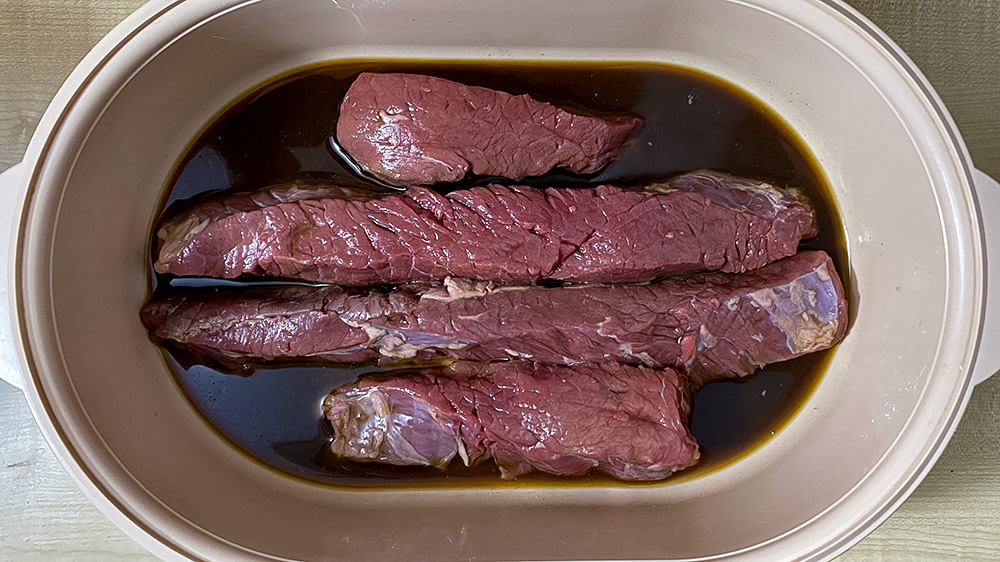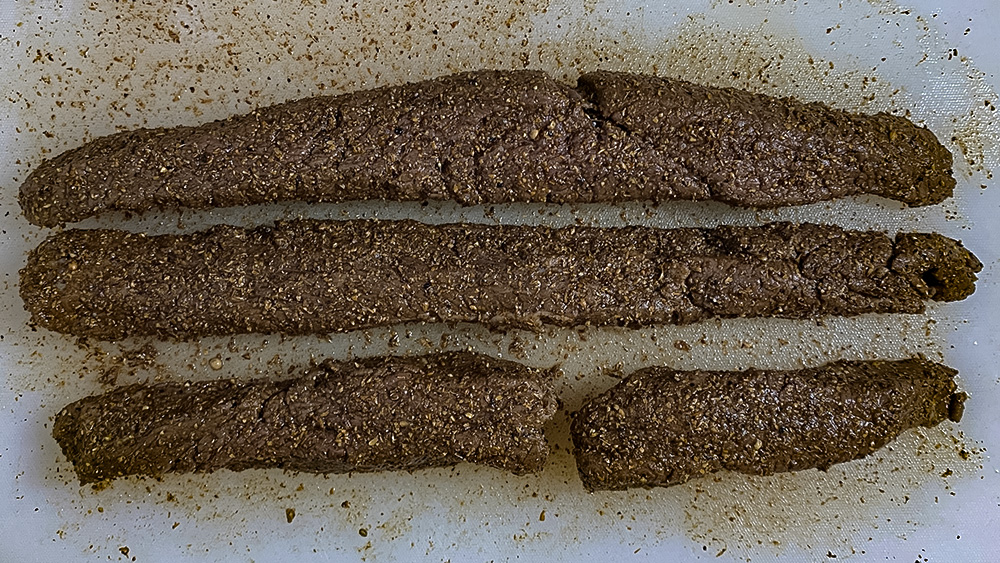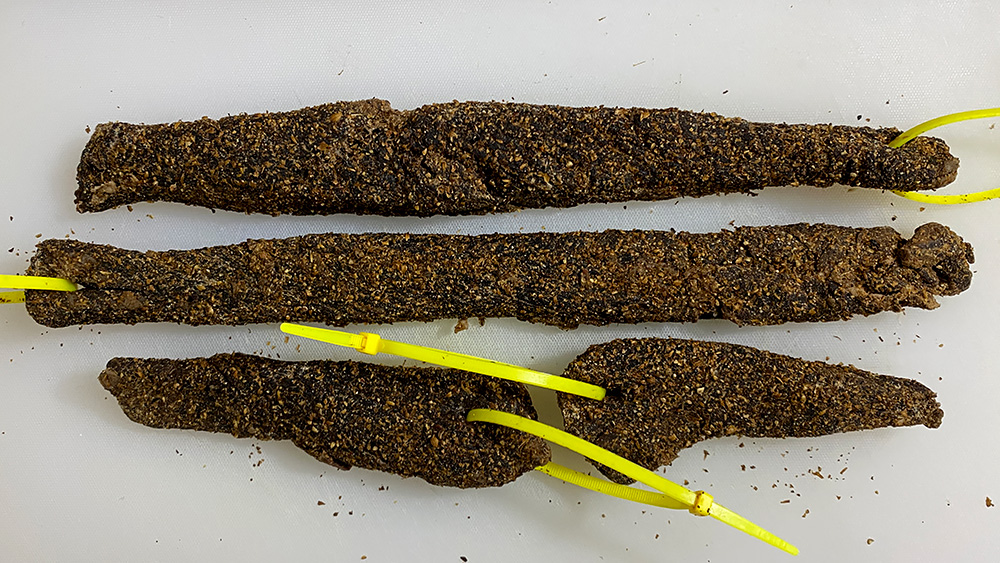|
Clem's Southern African biltong |
|
It is a simple recipe comprising meat (usually beef or game meat) from the rump or topside (finer cuts such as sirloin or fillet can also be used). The meat is generally lean although fat caps may be left on if preferred.
The other ingredients are
as simple viz. vinegar, salt, black pepper and coriander.
The shelf life of meat is extended by preparing it into
biltong (useful for great treks in times before
refrigeration was available). Microbial deterioration is
discouraged by the drying and use of salt (reduces Water
Activity) and vinegar (reduces pH) in the biltong
process. Further, recent research has shown that through the
usage of toasted coriander, the preservative property of that
spice via coriander oil is added to the product (for example,
refer to Silva et al. (2011)* who stated that "the
results obtained herein further encourage the use of coriander
oil in antibacterial formulations due to the fact that coriander
oil effectively kills pathogenic bacteria related to foodborne
diseases and hospital infections"). This was how I prepared my biltong:
|
|
|
* Filomena Silva , Susana Ferreira , João A Queiroz , and Fernanda C Domingues (2011) Coriander (Coriandrum sativum L.) essential oil: its antibacterial activity and mode of action evaluated by flow cytometry. J Med Microbiol: 60(Pt 10):1479-1486. doi: 10.1099/jmm.0.034157-0. Epub 2011 Aug 23.
|
14 Feb
2023
Created
by Clem Kuek



